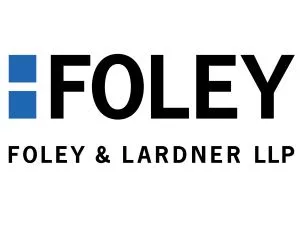Ann Marie Uetz’s articles from Foley & Lardner are most popular:
- in United States
Foley & Lardner are most popular:
- within Criminal Law, Government, Public Sector and Tax topic(s)
Key Developments
- Foley & Lardner's "Tariffs and Your Contracts" series addresses how to assess and structure commercial contract provisions amid the recent widespread tariff changes. The most recent article in the series is Tariffs and Your Contracts: Why do termination rights matter? Subscribe here to receive updates when new articles in the "Tariffs and Your Contracts" series are published.
- The U.S. Supreme Court expects to hear oral arguments in early November for a case challenging President Trump's use of the International Emergency Economic Powers Act (IEEPA) to impose tariffs on countries around the world. This follows a ruling from the Court of Appeals for the Federal Circuit that determined the President lacked the authority to impose the IEEPA tariffs of unlimited duration on a broad range of goods from numerous nations.
- A September 5 executive order amended the April 2 IEEPA reciprocal tariff order to exempt certain products, including critical minerals such as graphite, tungsten, and uranium, while expanding the duties to certain resin, silicone, and aluminum hydroxide products.
- A September 4 executive order implemented the previously announced U.S. – Japan Agreement. The agreement imposed a 15% import tariff on Japanese automobiles and automobile parts, retroactive to August 7, down from a previous levy of at least 25%.
- South Korean citizens detained during an immigration raid at a Hyundai – LG Energy Solution EV battery plant underconstruction in Georgia are expected to return home voluntarily in the coming days. The raid detained approximately 475 workers described as subcontractors who were not employed directly by Hyundai or LG Energy. A subsequent statement from the White House emphasized a goal to increase enforcement of foreign worker laws.
- The Mexican government is considering plans to impose new tariffs on certain automotive and manufacturing sector imports from countries that are not covered by a trade agreement, including China.
- U.S. new light-vehicle sales in August 2025 reached a SAAR of 16.1 million units, representing an increase of 3% year-over-year, according to preliminary estimates from Cox Automotive.
- EVs accounted for 12% of U.S. new light-vehicle sales in August, according to preliminary estimates, as consumers sought deals before federal tax credits are set to expire at the end of September.
- According to guidance released from the Internal Revenue Service, buyers are eligible to claim the federal EV tax credit as long as "a written binding contract is entered into and a payment has been made" by September 30, 2025.
- The Department of Transportation intends to propose three new rules in the spring of 2026 "to modernize Federal Motor Vehicle Safety Standards for vehicles with automated driving systems." The rulemaking will address standards for vehicles with automated driving systems (ADS) and no manual controls in areas that include windshield wiping and defrosting systems, as well as certain lighting equipment.
OEMs/Suppliers
- The Trump administration's rollback of fuel economy and tailpipe emissions requirements is expected to help the Detroit Three automakers reallocate billions of dollars from EV capital expenditures and costs associated with regulatory compliance credits.
- BYD reduced its 2025 global sales target to 4.6 million vehicles, from a previous goal of 5.5 million, according to unnamed sources in Reuters.
- Stellantis relaxed its policy to allow its buyers to accept certain supplier entertainment gifts, according to a report in Crain's Detroit.
- Auto supplier Astemo will invest $95 million to establish a new regional headquarters in Wixom, Michigan. Astemo is a joint venture operated by Hitachi, Ltd., Honda Motor Co., and JIC Capital, Ltd.
- GM will delay the planned reduction of a third shift at its Oshawa Assembly plant in Ontario to January 2026, and Stellantis plans to restore a third shift at its Windsor Assembly plant in Ontario in early 2026.
- In a social media post, Elon Musk predicted Tesla's humanoid Optimus robots could eventually contribute up to 80% of the company's value.
Market Trends and Regulatory
- The Q3 2025 Cox Automotive Dealer Sentiment Index (CADSI) was 43, up one point from Q2, but down from the two-year high of 58 in Q1. An index below 50 indicates more dealers view the market as weak rather than strong.
- North American commercial truck sales projections have declined by double-digit percentages since the start of 2025, as manufacturers and customers take a "wait-and-see" approach amid tariff uncertainty.
- The UAW urged Commerce Secretary Lutnick to impose tariffs on manufacturers of medium- and heavy-duty trucks to compel companies to increase U.S. production.
- Ford will recall 1.9 million vehicles across multiple nameplates from model years 2015 to 2019 due to a rear-view camera issue that may cause distorted or blank images.
Autonomous Technologies and Vehicle Software
- Qualcomm and Google Cloud will partner on agentic AI applications for vehicles.
- Waymo plans to begin testing autonomous Jaguar I-PACE and Geely Zeekr vans in parts of Seattle and Denver.
- Lyft debuted robotaxi service in in parts of Midtown Atlanta as part of a pilot program withMichigan-based May Mobility.
- Volkswagen plans to invest €1 billion ($1.2 billion) in artificial intelligence by 2030 in areas that emphasize "AI-supported vehicle development, industrial applications and the expansion of high-performance IT infrastructure."
Electric Vehicles and Low-Emissions Technology
- EY predicted the U.S. will reach 50% battery electric vehicle (BEV) adoption by 2039, five years later than previously forecast, and hybrid vehicles will peak at 34% of sales by 2034.
- GM will temporarily stop production of two electric Cadillac crossovers at its Spring Hill Manufacturing plant in Tennessee, and indefinitely postpone the start of a second shift to produce the Chevrolet Bolt EV at its Fairfax Assembly plant in Kansas. This follows a temporary production halt scheduled for September 2 until October 6 at the Factory Zero EV plant in Detroit-Hamtramck to reduce output of the GMC Hummer EV and Cadillac Escalade IQ.
- Volkswagen reduced output of the ID.4 EV in Chattanooga, Tennessee, resulting in temporary layoffs for 160 workers.
- Rivian laid off approximately 200 workers, which is equivalent to 1.5% of its total workforce.
- Fortescue canceled plans for a $210 million EV battery factory in Detroit due to "current policy settings and market conditions."
- Prime Minister Mark Carney paused the Canadian government's zero-emission vehicle sales targets to conduct a 60-day review of the ZEV mandate, amid political and industry pressure. Former prime minister Justin Trudeau established light-duty vehicle ZEV sales targets that began at 20% in 2026 and reached 100% in 2035. Transport Canada estimated first-half 2025 ZEV market share reached 9.7%.
- Canada intends to review its 100% tariffs on EVs imported from China to assess whether the levies should be revised.
- Stellantis abandoned a goal to sell only BEVs in Europe by 2030.
- Most European automakers are on track to meet the European Union's 2025-2027 carbon emission targets due to rising EV sales in the region, according to analysis in Reuters. The combined market share of petrol and diesel cars fell to 37.7% of new EU car registrations for July 2025 year-to-date, compared to 47.9% in the same period in 2024.
- Lucid's electric Earth SUV is expected to debut in late 2027 or mid-2028 with a base price of approximately $50,000.
- EV startup Slate's customizable bare-bones electric pickup truck is expected to cost under $30,000 when it launches in late 2026. Ford expects to debut a $30,000 electric pickup truck in 2027. Automakers collectively sold about 35,000 electric pickups in the U.S. in the first half of 2025, down 4% from the year before. An estimated 1.6 million gasoline-powered full-size pickups were sold during the same period.
The content of this article is intended to provide a general guide to the subject matter. Specialist advice should be sought about your specific circumstances.




